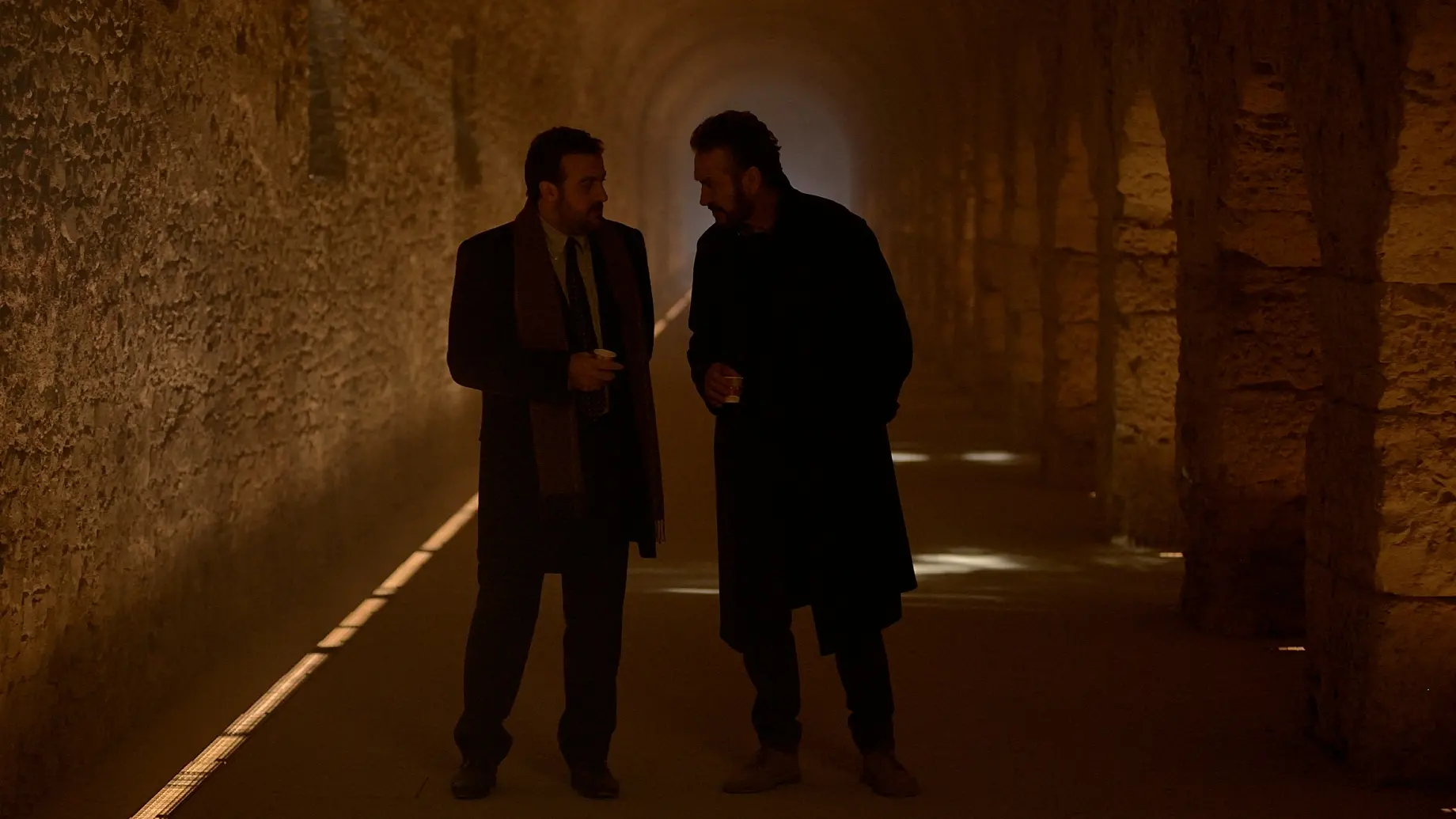

Rocco Schiavone is not happy in Aosta. His friends, practically his family, are in Rome, where the sun shines and it’s hot. Up here, in the middle of the mountains, it’s always grey, raining and snowing, although he stubbornly continues to wear a green loden coat and a permanently soggy pair of formal shoes. It’s as if the weather reflects the state of mind of the deputy chief of police, making a region that is actually rather beautiful and welcoming seem dark and gloomy.
His short trips to the capital fail to stem his sense of unease, which runs deeper, as revealed to us episode by episode, in the only two places of refuge in which Schiavone allows himself to face his ‘conscience’: his apartment, the exteriors of which are actually that of the 17th-century Palazzo Ansermin, and the Roman Theatre. The other place we find him in during his down time is a table at a historical cafe under the portico of the town hall in piazza Chanoux.
As the plots of the various episodes unfold, we get to know other places in the city and the Valley, between heinous crimes and brilliant solutions. The murder of a man leads Schiavone along ‘the black path’ in Champoluc in the Ayas Valley. An apparent suicide introduces us to the cloister of the Collegiate Church of Sant’Orso in Aosta, where the deputy chief of police has an enlightening encounter with the murderer right under God’s nose.
One of the two cases in the third episode starts off in the majestic Sant’Orso Cemetery, and the other during an expedition by a group of architects who have decided to scale the peak of Mount Pollux, over 4.000m high, in the Mount Rosa Massif. The Forensic Cryptoporticus is where Schiavone updates his colleagues and superiors on the progress of his cases.
During one of Schiavone’s investigations, that of the kidnapping of a young girl, we see him take the cable car that leads from Aosta straight to Pila, a ski resort in the municipality of Gressan where his Roman friends are on holiday.
Rocco Schiavone is not happy in Aosta. His friends, practically his family, are in Rome, where the sun shines and it’s hot. Up here, in the middle of the mountains, it’s always grey, raining and snowing, although he stubbornly continues to wear a green loden coat and a permanently soggy pair of formal shoes. It’s as if the weather reflects the state of mind of the deputy chief of police, making a region that is actually rather beautiful and welcoming seem dark and gloomy.
His short trips to the capital fail to stem his sense of unease, which runs deeper, as revealed to us episode by episode, in the only two places of refuge in which Schiavone allows himself to face his ‘conscience’: his apartment, the exteriors of which are actually that of the 17th-century Palazzo Ansermin, and the Roman Theatre. The other place we find him in during his down time is a table at a historical cafe under the portico of the town hall in piazza Chanoux.
As the plots of the various episodes unfold, we get to know other places in the city and the Valley, between heinous crimes and brilliant solutions. The murder of a man leads Schiavone along ‘the black path’ in Champoluc in the Ayas Valley. An apparent suicide introduces us to the cloister of the Collegiate Church of Sant’Orso in Aosta, where the deputy chief of police has an enlightening encounter with the murderer right under God’s nose.
One of the two cases in the third episode starts off in the majestic Sant’Orso Cemetery, and the other during an expedition by a group of architects who have decided to scale the peak of Mount Pollux, over 4.000m high, in the Mount Rosa Massif. The Forensic Cryptoporticus is where Schiavone updates his colleagues and superiors on the progress of his cases.
During one of Schiavone’s investigations, that of the kidnapping of a young girl, we see him take the cable car that leads from Aosta straight to Pila, a ski resort in the municipality of Gressan where his Roman friends are on holiday.

Cross Production, Rai Fiction, Beta Film Gmbh
Rocco Schiavone is an assistant chief of police for the Italian State Police force who has been relocated to Aosta for disciplinary reasons. He is highly talented, but has a surly manner and unorthodox methods.